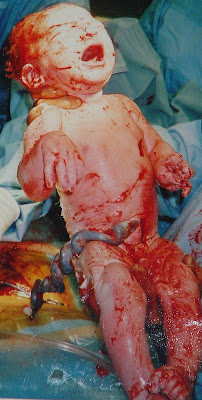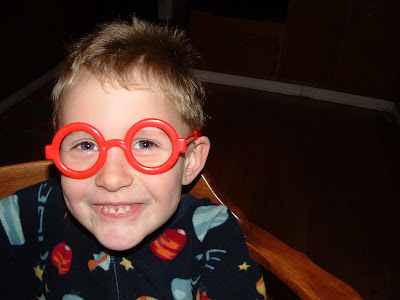Five years ago, on January 17th, I made one of my students vomit.
I hadn’t even assigned “The Rime of the Ancient Mariner,” either.
Rather than yacking up her lunch as a reaction to Coleridge’s opium-induced writings, she barfed out of affection and empathy.
See, this student came from a background so sketchy, so traumatic, that you would be skeptical of the details. The first twenty years of her life were positively and brutally cinematic, in a directed-by-Quentin-Tarentino-and-starring-Harvey Keitel-as-a-coke-addicted-mafia-enforcer-with-a-blowtorch-and-a-pair-of-pliers kind of way. In short, any possible abuse that you can imagine inflicted on another human being had been heaped upon her before age 11, when she finally broke free of her parents’ terrors one seminal night and found possibility–found life–on the streets.
I didn’t know all this at first, of course. All I knew was that she seemed oddly experienced yet unformed there in Freshman Composition, and when I gave students twenty minutes to write up a paragraph of introduction, she fidgeted and ultimately turned in less than a line, apologizing that she was having a bad day. At that time, I didn’t know her literacy was so newly-minted that it shattered in the face of pressure.
As the weeks passed, I noticed that she was making tentative overtures of friendship and that she seemed willing to expose some hidden parts of herself (when she came up after I’d assigned the persuasive essay to say, “You told us to write from our personal experience, so, uh, could I argue that the War on Drugs is a good thing, from the point of view of those in the drug trade? I can easily come up with three reasons to support that idea–it keeps our, um, their prices higher and keeps employment opportunities up for some of us, um, them and such to have drugs outside of government control). I told her to go for it, draw from her experience, and if she didn’t want to share her essay with classmates during a peer review session, she didn’t have to.
In particular, she seemed fascinated by my expanding belly that semester, as I was in my last trimesters of cooking up the Wee Niblet. She started with “I’ve never seen a healthy pregnancy before” and, a week later, progressed to “So this kid won’t be addicted to nuthin’ when it comes out, right?” before eventually winding around to “Because of some stuff that’s happened to me, I can’t have kids.”
Thusly, through small disclosures, we became friends. The semester and third trimester carried on.
Then the semester ended in December, and the third trimester carried on. And on. And on. Those last weeks dragged out endlessly, as they do in most pregnancies, but for me they were exacerbated by a big baby in my uterus deciding to turn. Generally speaking, at the end of the pregnancy, a fetus is too big to move much, but Niblet apparently was feeling the squeeze because he shifted from happily-head-down (the Ready to Rock position) at about Week 38 of my pregnancy to Head Up and Right, Head Up and Left, and eventually Head Slowly Descending, which I think is also a yoga pose.
Trust me, having a huge ball of flesh move around in a womb that’s stuffed to bursting–bursting like Paris Hilton’s closet, but not like her head–is painful. Each time he started travelin’, I had to stop and grab the counter or the car or Groom’s leg, thinking, “Holy Red Hots, but this is some funky contraction.”
Then it would stop, not a contraction at all. I’d clean up the spilled cereal or pick up the groceries or administer a soothing cream to Groom’s broken leg skin, and we’d move on.
We did have the support of a doula during the pregnancy and labor, fortunately, and during the “Where the Hell’s the Head Now?” phase of things, when I was getting weekly ultrasounds to determine the babe’s position, she would come over and help me try to flip the Niblet. There are age-old methods of baby moving, apparently, that require the expectant mother to crouch on the living room floor in a position called Turtle or to do lunges against the edge of the couch, in the hopes of prompting the Little Shaver to rotate. Since these methods have emerged out of eons of childbirth, I found them worth trying, although I never could figure out how prehistoric women did them–what with not having living rooms or couches.
After all my contortions, the baby ended up head down, but anteriorly, not posteriorly (translation: when you’re standing behind a birthing woman–which is safer than standing in front of her, where any missiles she lobs…water glasses, car keys, unopened condoms…can nail the innocent onlooker–the baby’s face should be looking right at you when it exits the birth canal. In my case, the baby was trying to come out face forward, so he could watch and flinch each time innocent onlookers were pelted with unopened condoms). The upshot was that the kid was overdue and not in ideal position, but he could make it out.
Ultimately, labor was induced. The night before, I was checked into the hospital, where a heavy-handed resident practiced, with loudly-whispered advice from the bystanding nurse, inserting a little P-gel, in the hopes of ripening my crabby cervix and making it more amenable to labor. It didn’t help much, so the next morning, they broke out the hard stuff: Pitocin.
Haysoos Marimba, but a Pitocin contraction is a regular contraction on steroids (or, um, Pitocin). Bigger, harder, meaner. I labored for about six hours–in awe at my water breaking, at upchucking my Nutrigrain Cereal Bar when I dilated to four centimeters (classic stuff, I was told). Truth be told, I was only awed for about 4 seconds during that time. The rest of it?
I wanted to die.
There’s a reason why I’ve never written about this day before. Even with my love of juicy vocabulary and a sound thesaurus, I have continued to have the sense that there just aren’t words for that day. When I type, “I wanted to die,” it sounds cliche. It sounds like me at the mall when I spy the perfect pair of ankle boots on clearance–and, amazingly, they are available in my size–but when I get them to the check-out, I am told they weren’t on clearance after all. That’s when I usually drum up a good “I just want to die.”
So it’s almost impossible for me to convey my longing to die that day. Unquestionably, if I had been Linda Purl in The Young Pioneers, out there alone on the prairie, just me in my corn-husk bed, raising my calico skirts to make way for the delivery, reaching for my sewing shears to sever the umbilical cord, I would have died. I would have reached over for my plow-loving husband’s rifle, angled it towards my head, and pulled the trigger.
Fully aware of the impact of my actions and the fact that I would miss that year’s wheat harvest, I still would have pulled the trigger. Knowing how much we had desired this baby, craved his addition to our family, planned to have him, I would have pulled the trigger.
On our way out of the world, I might have whispered an apology to the baby. But mostly, I would have welcomed the release from the agony. That day, in the hospital, I just didn’t care. I only needed it to end.
In my recollection, the long hours are actually a blur. Women in labor dive so deeply, internally, that we don’t realize our husbands are shoveling in Dagwood sandwiches while standing next to us–getting the bones in one hand crunched during a contraction, snarfing down a stack of turkey and lettuce with the free hand. I certainly had no idea Groom had eaten. Later, I expressed to Groomeo my admiration at his uncomplaining fast, noting that he must have been incredibly hungry as he worked Support Staff. Turns out, he ate quite a bit while standing a foot away. He probably answered the phone, too, fluffed some pillows, and carried on conversations about the local news anchors’ hairstyles. I had no idea.
Certainly, I was not proud; I availed myself of one, two, three epidurals, the story of which is another twelve-page post. In brief, epidurals are more efficaciously administered when the hospital pages the anesthetist on duty, not one who is at home shoveling his sidewalk. And certainly, I had my peeps. Pulling me through that day were not only the doula and Groom but also our kids’ Godmamas (the beautiful lesbians), my cousin’s wife (herself nine months pregnant, yet she dropped to her knees repeatedly to massage my lower back as we paced the halls very early in the process, helping me wheel the IV stand along), and my mother (who was ultimately sent from the room, when she couldn’t handle seeing her own grown-up baby girl in such a state). This troupe went through their own physical contortions on my behalf: pressing into me a foot or an elbow to counteract the back labor; chasing the heartbeat around my uterus with a mobile monitor, to avoid having to insert a scalpal monitor into the baby, who was firmly lodged inside of me; getting my husband that big ole sammy.
Even surrounded by help and love, however, I was ready to die.
Still working, our doula urged me to lower my vocalizing from high, squeaking, ineffective pips down to lower, stronger, diaphragm-centered tones, yet the baby didn’t descend any further. The nurses came and went with a bustle. And then the resident insisted on checking my dilation during a contraction.
As I bellered at this painful indignity, and the cast swirled around me, trying to regain focus out of chaos, the curtain shielding the door to my room was pushed aside. It was my excited, naive student. She was happy, expectant, ready to see a healthy baby for the first time in her life. She was ready to behold the post-birth beauty of Mother and Child, nestled in joyous union.
Instead, she walked in on Dante’s Inferno, if Homer Simpson had doused that inferno with charcoal lighter and held a Bic to it before spraying the whole thing with aerosol hairspray.
At the moment she popped through the door, she heard one of my low, gutteral,”I-am-a-broken-person” moans. It struck her as a familiar a sound. It struck her as the same sound she’d made herself in moments of profound physical pain, when others were on her, in her, torturing her. It struck her that I was dying. I wager it struck her that I wanted to die. She’d been there.
As the doula called out to my stunned student “This is NOT a good time,” she’d already turned and run–run down the hall, stumbling into the nearest bathroom, where she vomited up her visceral reaction to what she’d seen and heard.
For the rest of that day, both of us were shaking. I had five more hours of torment before decelerations in the baby’s heartbeat led to an emergency C-section. Strangely, I felt shame about not being able to get that baby out on my own. I felt I hadn’t worked hard enough. I felt a failure.
However. When the blessed epidural finally took effect in the operating room, and the misery ceased for the first time in eleven hours, and I proclaimed my everlasting love to the anesthesiologist, they pulled the Niblet out of me, and no matter how he got here, I was oh-so-glad he had arrived.

(with Niblet weighing in at a few ounces over 10 pounds, the surgical team greeted him with a roar of appreciation; for at least a few more days, he had the distinction of being the biggest baby born in the city that year)
Due to the sheer amount of painkiller my body had accumulated throughout the day, I had been on oxygen; I had the shakes; I had uncontrollable itching. As I was prepped to move into the recovery room, the brusque surgeon took two seconds to stop by my arm, which she touched briefly. I had been warned that bedside manner wasn’t her forte, but her words sliced me as deftly as her knife: “You need to know that you couldn’t have done this any other way. Neither you nor he would have made it. This was the only option.”
It is so rare that we hear exactly what we need to, exactly when we need it most. She gave me that rare solace.
—————————
The day after Niblet was excised, when I was still hooked up to the ease-inducing morphine pump, the phone in my hospital room rang.
It was my dear, traumatized student. She opened with, “So you’re alive?” An hour later, she sat at my bedside, a bag of chocolates in her hand. With awe, she took in the fact that I had been through such an ordeal, yet I was still her same Jocelyn (read: happy to see the chocolate). When the nurses brought my boy in for a feeding, she refused to hold him, aw-shucks-ing that she wouldn’t want to drop him.
A few minutes later, after our goodbyes, I spied her down the hall, standing outside the nursery, where she stared through the glass at him with marvel bordering on reverence. Overwhelmed, I hit the button on my morphine drip and clutched a pillow to my foot-long incision, grimacing as I anticipated the pain of an approaching sneeze.
That hospital hall saw my student move from spew to wonderment in the course of twenty-four hours. It took me weeks to recover from the agony of Niblet’s delivery, but the sight of her down that hall, her nose against the glass, appreciating for me what she could, can, never have, was an instant benediction.
Her joy at my good fortune,
her joy at seeing a healthy, welcome child,
her joy in his tightly-swaddled purity
reminded me that beauty can be birthed out of terror and anguish.
And now Niblet is five, and Student has just this week accepted her first professional job.
As a nurse.



Leave a Reply